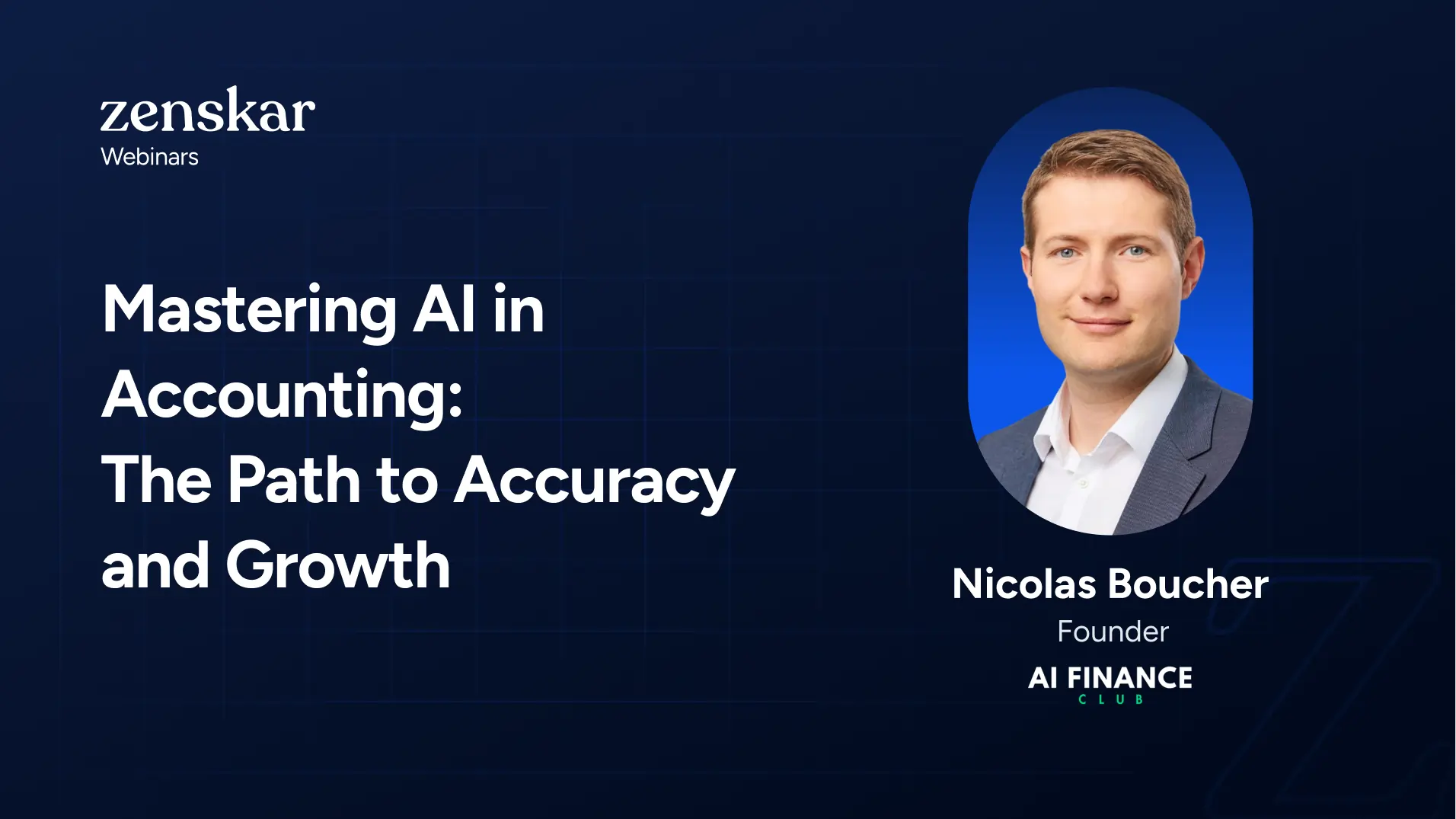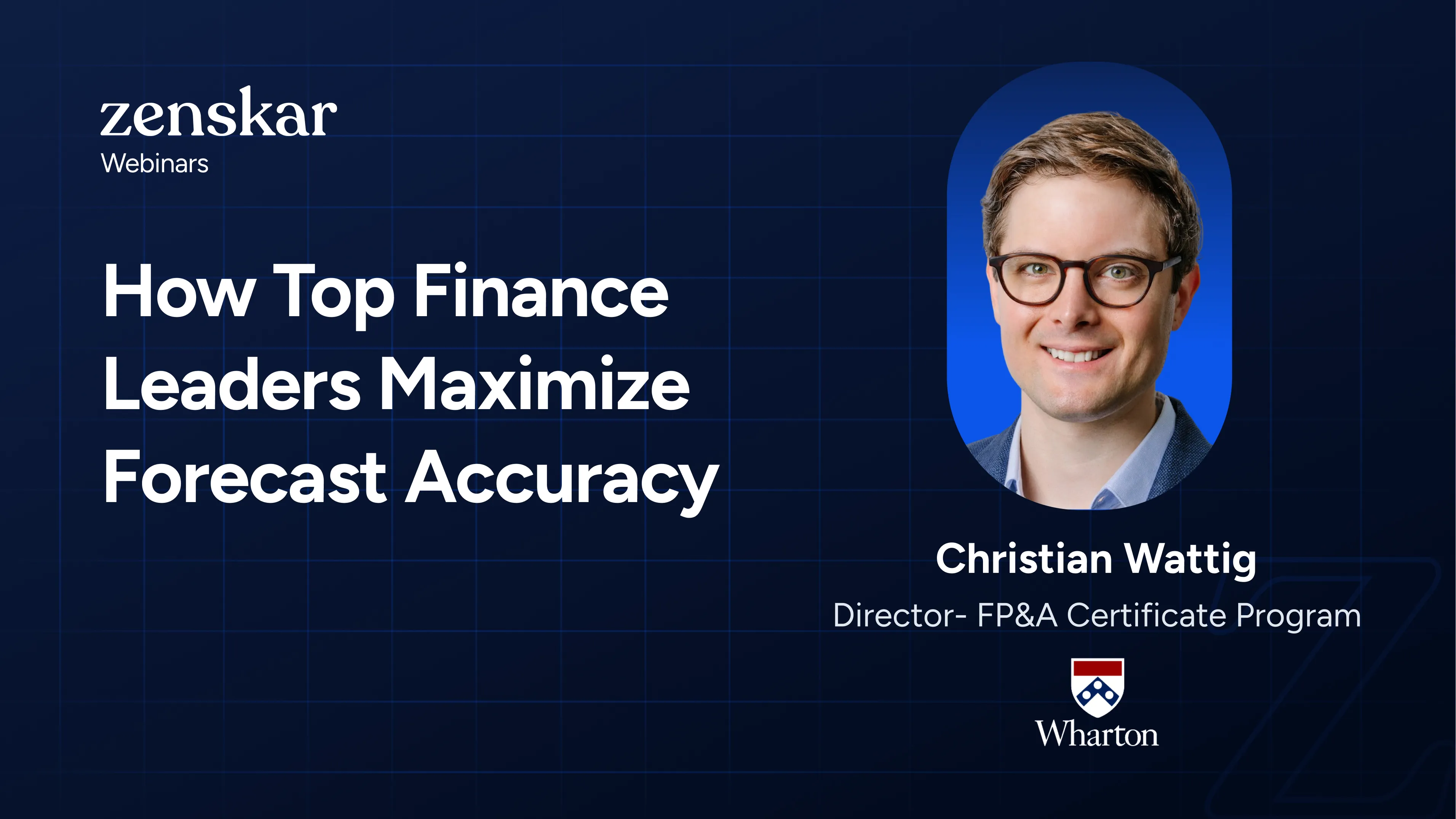Join Nicolas Boucher, founder of the AI Finance Club, international keynote speaker, and trusted advisor to brands like SAP, Rakuten, KPMG, AWS, for a masterclass on how AI is transforming accounting operations.
See how leading finance teams are automating close processes, reconciling data faster, and shifting from reporting to strategic advisory, without writing a single line of code.
You’ll learn:
- Simple ways to lead AI transformation, no engineering required
- How top companies are using AI across core finance workflows
- Use cases for automating bookkeeping, reconciliation, and reporting
- Real-world AI tools already delivering measurable impact in accounting
- How to position yourself as an AI-enabled strategic partner to the business
- The mindset shift finance teams must make to stay relevant in the age of AI.
Who should attend?
- Teams buried in spreadsheets and manual processes
- Anyone building an AI roadmap inside their finance function
- Accountants and finance leaders exploring AI-led transformation
- Controllers, accountants, and FP&A pros looking to scale output
Meet your speaker:
Nicolas Boucher
Founder, AI Finance Club | Corporate Finance AI Trainer | 2M+ Audience
- Europe’s leading voice on AI in Finance, FP&A, and Controlling.
- Founder of the AI Finance Club, a global community of 800+ paying members advancing AI adoption in finance.
- With 15+ years in leadership roles at PwC and Thales, Nicolas has trained over 5,000 professionals in AI for corporate finance.
- Trusted advisor to global brands like SAP, Rakuten, and KPMG on finance transformation.
Webinar Summary
1. How can AI simplify the month-end close process for finance teams?
In my previous roles, the month-end close process was a time-consuming task that often took days. To address this, I introduced AI tools that automated repetitive tasks like journal entry reconciliation and financial reporting. For example, we used AI to automate invoicing, which reduced our month-end close time by 50%. My advice to finance teams looking to automate: start with automating simple, repetitive tasks and scale across the team as you gain confidence. Ensure that the AI tools integrate seamlessly with your existing systems, like your ERP or CRM, for smooth operation.
2. Can AI help in analyzing large datasets for financial reports?
Yes, AI is extremely powerful in analyzing large datasets for financial reports. In one of my previous roles, I used AI tools like ChatGPT and Gemini to analyze year-over-year revenue growth across different business units. The AI was able to identify trends and patterns that were not immediately apparent. We also set up automated reports that updated key metrics weekly, freeing up time for more strategic decision-making. I recommend using AI for repetitive, large-scale analyses, as it can also flag anomalies that might indicate potential risks.
3. What steps did you take to automate manual data entry in your previous roles?
I encountered a situation where my team spent hours entering data manually into SAP, particularly categorizing overdue invoices. To tackle this, I implemented an AI solution that could pull data from SAP and automatically classify invoices, reducing errors and processing time. The key takeaway here is to start by automating small, high-time-consuming tasks. Once your team becomes comfortable with the tool, you can scale automation across other areas. It’s important to choose AI tools that are user-friendly and don’t require deep engineering bandwidth.
4. How do you manage AI security and privacy concerns when using AI tools in finance?
Data security is always top of mind when using AI in finance. In my experience, it’s crucial to ensure that the AI tools you use comply with industry standards like SOC 2. I always opted for professional licenses of AI platforms (like ChatGPT Pro and Microsoft Copilot), as they offer better security and compliance. One thing I emphasize is understanding how your AI platform handles data—whether it uses your data for model training or is solely used for the tasks at hand. This transparency is key to maintaining the security and privacy of sensitive financial data.
5. How can AI help identify missed revenue opportunities?
AI has proven invaluable in identifying missed revenue opportunities. For example, in a previous company, AI flagged a 5% revenue leakage due to missed invoices and billing errors. The AI detected discrepancies between sales agreements and invoices, which were often missed due to the complexity of contracts. After automating the billing system, we improved invoicing speed and saw a 5% revenue uplift. My advice to finance leaders is to leverage AI to regularly check your invoicing system, ensuring that every transaction is accounted for and the revenue recognition system is correctly recognising revenue.
6. What strategies did you use to scale finance operations without adding headcount?
In my roles, I leveraged AI to scale finance operations without increasing headcount. For example, instead of hiring additional people to manage an increased transaction volume, I implemented Zenskar’s AI tools to automate invoicing, collections, and revenue recognition. These tools helped process contracts, generate invoices, and provide cash flow insights, allowing the team to focus on more strategic tasks like budgeting and forecasting. The key takeaway is to prioritize automating repetitive tasks first, which will reduce dependency on new hires and maintain efficiency.
7. Can AI be trusted to make decisions in revenue recognition?
While AI can’t fully replace human oversight in revenue recognition, it is an excellent tool for automating the process in line with ASC 606 standards. I used AI to automate journal entries based on contract terms, which minimized errors and sped up the process. The AI system handled complex contracts with multiple performance obligations efficiently. My advice to CFOs is to implement AI tools that can generate automated journal entries and offer audit trails, but always ensure that there’s a human review for compliance.
8. How do you prioritize AI implementation in finance?
When it comes to AI implementation in finance, my strategy was to focus on automating low-value, high-time-consuming tasks first. For example, I started with AI-driven invoicing and then moved on to more complex tasks like financial forecasting. The first step was to align AI implementation with the broader company strategy and identify areas where manual work was overwhelming. I also ensured that the AI tools I chose integrated well with existing systems like ERPs, so the transition was smooth. My advice is to start small, prove the value, and then scale.
9. How do you assess the return on investment (ROI) for AI tools in finance?
In my experience, assessing the ROI for AI tools starts by evaluating time savings, error reduction, and improved process efficiency. For instance, we tracked the time saved by automating invoice processing, which resulted in faster payment cycles. We also measured the reduction in late fees due to missed invoices. To get a clear picture of ROI, I recommend tracking how much AI can save in labor costs compared to the cost of the tool itself. Setting clear KPIs before implementation ensures that the outcomes are measurable and actionable.
10. Can AI help improve financial forecasting and budgeting?
AI can certainly improve financial forecasting and budgeting by using real-time data to generate more accurate predictions. I used AI-based tools to analyze historical data and forecast future revenues, which was particularly useful in volatile markets. By automating the collection and analysis of financial data, AI ensured that our forecasts were always based on the most up-to-date information. I advise finance teams to use AI to make their budgeting more agile, allowing them to adjust quickly to market changes and make data-driven decisions.
11. How do you ensure that AI implementations align with a company’s financial goals?
I always made sure that AI tools aligned with the company’s financial strategy. In one role, I worked closely with the finance team to ensure that AI supported objectives like reducing days sales outstanding (DSO) and improving cash flow. I implemented AI tools that automated invoicing and provided real-time insights into collections. My key advice is to integrate AI into your financial strategy, ensuring that the automation directly supports goals such as revenue growth and cost reduction.
12. What do you think are the most common mistakes finance leaders make when implementing AI in their teams?
One of the biggest mistakes I see finance leaders make is failing to define clear objectives before implementing AI. For example, when implementing AI for revenue recognition, some teams didn’t set clear success metrics, leading to underutilized systems. I always recommend that CFOs set specific goals and ensure their team is properly trained. Clear communication is crucial for successful AI adoption, as is ensuring that the team understands how the AI system supports their daily work.
13. How do you involve non-finance teams, like sales or product, in AI adoption?
In my experience, getting buy-in from non-finance teams like sales or product is essential for successful AI adoption. I set up “dependency handshakes” between sales and finance teams, where both had to align on pricing terms and invoicing expectations before contracts were signed. This ensured that the AI system had the correct data and that all teams understood the capabilities and limitations of the technology. My advice is to involve non-finance teams early on, aligning AI adoption with the needs of other departments.
14. How can finance leaders ensure their teams embrace AI without feeling overwhelmed?
I found that the key to helping teams embrace AI without feeling overwhelmed is to start small and provide plenty of training. For example, I began by introducing AI for simple data entry tasks and then gradually expanded to more complex financial reporting. I also used pilot programs to let teams get comfortable with the technology before fully scaling. My advice is to position AI as a co-pilot, not a replacement, so teams can focus on high-value tasks while the AI handles repetitive work.
15. What future trends do you see in AI adoption for finance teams?
I believe the future of AI in finance lies in predictive insights that help leaders make data-driven decisions. In my experience, AI will not only automate tasks but also help forecast trends, flag risks, and identify revenue opportunities in real-time. I see a future where AI-driven pricing models and financial strategies become the norm, giving companies a competitive advantage. My advice is to stay ahead of these trends by experimenting with new AI tools and constantly iterating based on feedback from your team.
















.webp)

